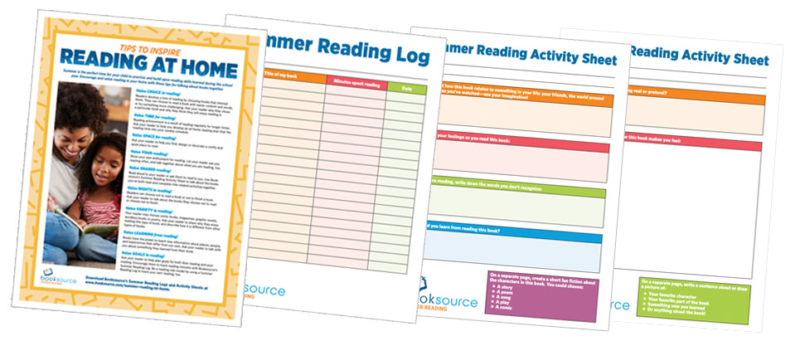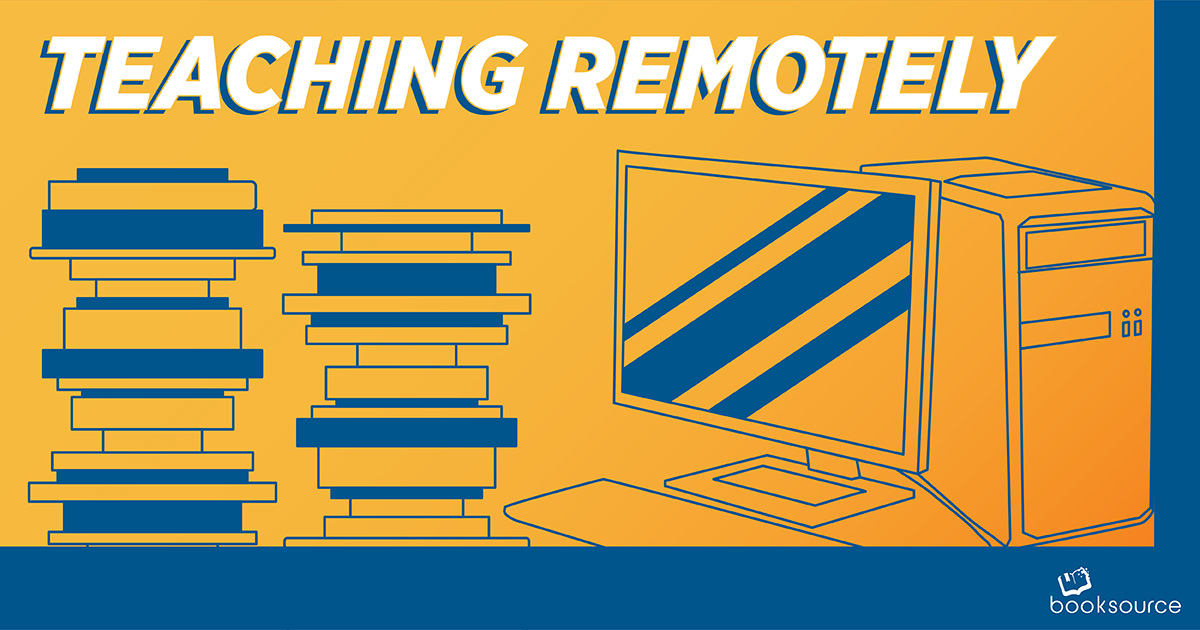With the closing of many schools across the country due to the increasing threat of coronavius (COVID-19), numerous educators are facing the prospect of e-learning becoming the norm for the foreseeable future. Lesson plans are changing with little to no notice, and we at Booksource want to help support you as the situation evolves.
Below you will find some tips and tricks for remote teaching:
1. Do the technical legwork
The first step is to make sure your digital tools are set up, and you’re feeling confident using them. If you don’t yet know what platforms to use, here are some good options.
Set up virtual meetings, chat and video conference:
Create an assignment workflow, send announcements and foster class discussions:
Record lessons, book talks, read alouds and more:
If you’re recording YouTube videos involving reading texts aloud, make sure your videos are set to “Private” or “Unlisted” so that you avoid copyright issues. (Some publishers are adding short term amendments to their policies—click HERE for specific guidelines.)
It’s relatively easy these days to find online tutorials for any and all platforms, so if you’re feeling completely lost, you should be able to find helpful information online.
2. Consider the points of view of your students and their caregivers
The next step is to make sure all of your students can also access these tools. Provide instructions if possible and make yourself available for troubleshooting. Learning new systems can be overwhelming for young students, especially with at-home distractions. Don’t forget that many parents and guardians will likely be working from home alongside their children, so keep them informed of new practices and developing situations.
While this might be an opportunity for many students to develop technological skills, it’s also important to recognize that not all students will have access to computers and the internet. Think about your class and pinpoint students who might need paper worksheets to continue their learning.
Understand that adapting will be a process for all involved, and some trial and error is bound to happen.
3. Structure your day (and theirs)
It can be so easy to feel stagnant while working from home. Make sure to hold yourself accountable by sticking to a daily schedule as you would if you were in the classroom.
Even more essential might be creating a schedule for your students to help parents with the transition, and make sure playtime doesn’t suddenly take over the entire day.
4. Hold remote office hours
Since you won’t be able to monitor your classroom to make sure students are focused, plan to check in one-on-one via video conference or phone call whenever possible. Ask about the progress of students’ work, discuss upcoming lessons, make time for their questions and concerns and ask parents to join you if necessary. Everyone will feel better knowing there is time built in for the kind of attention you usually provide in person.
5. Utilize the online community
One of your greatest resources is your fellow teachers—you’re all in this together. Luckily, there are digital spaces with groups of teachers right at your fingertips:
Booksource Social Media: Our goal is to support teachers with the content we post, and we hope it fosters beneficial discussions in our comments. Find us on the following platforms:
Facebook
Twitter
Instagram
Pinterest
YouTube
Twitter: Educators are already sharing updates and strategies in real time on this platform. If you don’t yet have a Twitter account, it might be the perfect time to start. Pay specific attention to the following hashtags:
#RemoteTeaching
#RemoteLearning
#eLearning
#OnlineLearning
#Quaranteaching
#Quarantread
Reddit: Another great sharing platform, educators provide thoughts, insights and articles. Try some of the following threads:
r/Education
r/Teachers
r/Teaching
6. Encourage reading above all else
If you are completely at a loss when it comes to technology, the best thing you can do is keep your students reading to ensure their literacy skills and their interest in learning continue to develop.
Make sure to send your students home with plenty of books if possible! Or if your school has already closed, communicate with parents about finding reading materials for their children.

To help you support students, we’ve gathered some free, online resources. You can print these out and send them home with kids or send the links to parents to print at home:
Tips to Inspire Reading at Home:
Reading Logs:
Activity Sheets:
Sheet 1, English
Sheet 1, Spanish
Sheet 2, English
Sheet 2, Spanish
We’ll be keeping up-to-date on tips and trends as the COVID-19 situation develops. Stay tuned to our social media platforms for the latest!








[…] Most parents aren’t teachers or literacy experts, and that’s okay. They’re probably overwhelmed right now and may require some guidance on your part, so make sure to keep the lines of communication open during this time of remote learning. Email with suggestions for activities like the ones we list below and schedule office hours for answering questions. (Find more tips for remote teaching here.) […]
Hi. I’m glad he found booksourcebanter.com website,
I really like it, the article is very useful and I shared
it! In order to survive the hard times ahead we found
2 very good books, you can download them here: https://bit.ly/2RlAHdb and here:
https://bit.ly/3e3Bg59
Great success with this site!